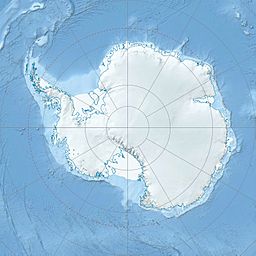Mount Kaplan facts for kids
Quick facts for kids Mount Kaplan |
|
|---|---|
| Highest point | |
| Elevation | 4,230 m (13,880 ft) |
| Prominence | 1,783 m (5,850 ft) |
| Listing | Ultra |
| Geography | |
| Location | Antarctica |
| Parent range | Hughes Range |
Mount Kaplan is a huge mountain in Antarctica, a cold continent at the South Pole. It is the tallest mountain in the Hughes Range. This impressive peak stands about 5 kilometers (3 miles) southeast of another mountain called Mount Wexler.
Mount Kaplan is known for being an "ultra-prominent peak." This means it rises very high above the land around it, even if the land itself is already high up. It's like a giant tower standing out from a high plateau.
About Mount Kaplan
Mount Kaplan reaches a height of 4,230 meters (about 13,878 feet) above sea level. That's taller than many famous mountains around the world! It is part of the Queen Maud Mountains, a major mountain range in Antarctica.
Where is it?
Mount Kaplan is located in a part of Antarctica called the Ross Dependency. This area is claimed by New Zealand, though most countries don't recognize these claims. Antarctica is the coldest, driest, and windiest continent on Earth. It's a land of ice and snow, with very few plants or animals living there.
How was it discovered?
Mount Kaplan was first seen and photographed by Admiral Richard E. Byrd on November 18, 1929. Admiral Byrd was a famous American explorer who led several expeditions to Antarctica. He was flying over the area when he spotted this massive mountain.
Later, in 1957–58, a team led by A.P. Crary surveyed the mountain. To "survey" means to carefully measure and map the land. Crary's team gave the mountain its name.
Who was Joseph Kaplan?
The mountain was named after Joseph Kaplan. He was an important scientist who led the U.S. National Committee for the International Geophysical Year (IGY) from 1957 to 1958. The IGY was a huge worldwide science project. Scientists from many countries worked together to study Earth's atmosphere, oceans, and land. They wanted to learn more about our planet during a special 18-month period. Naming the mountain after Joseph Kaplan was a way to honor his important work in this global scientific effort.


